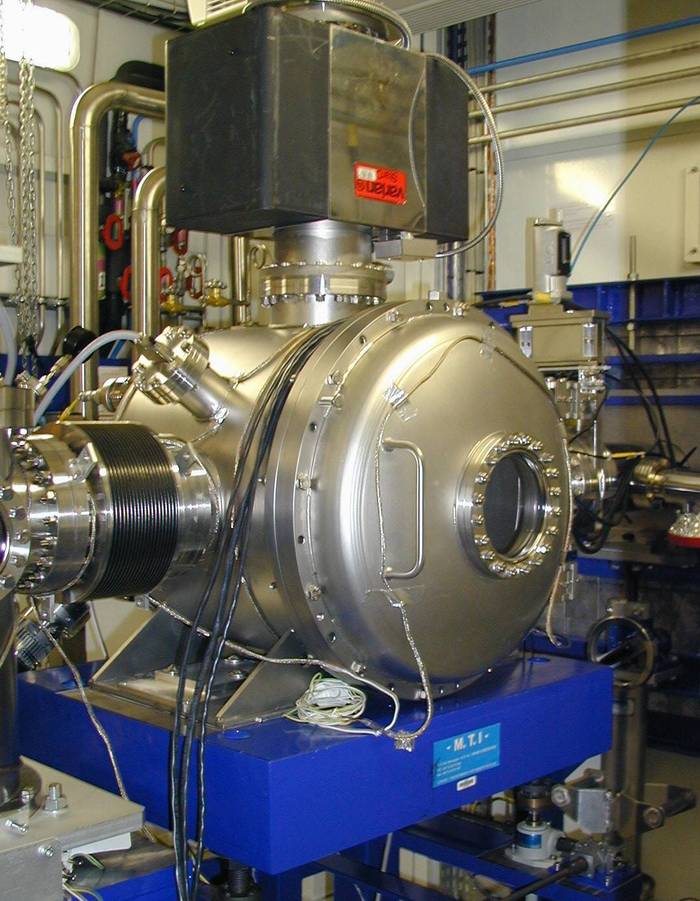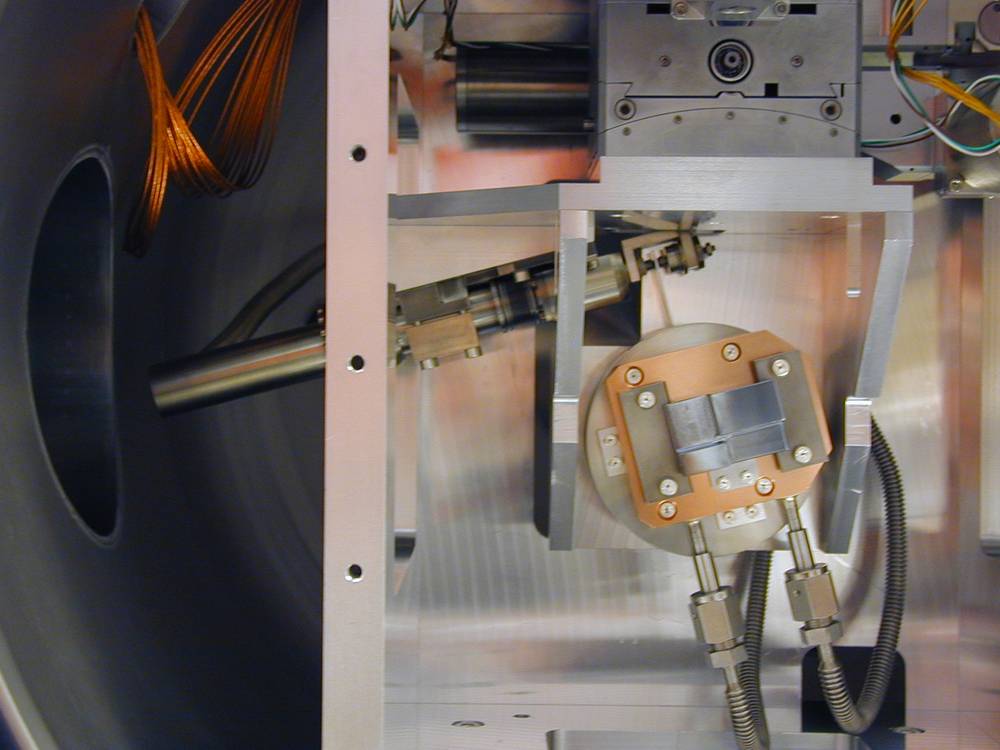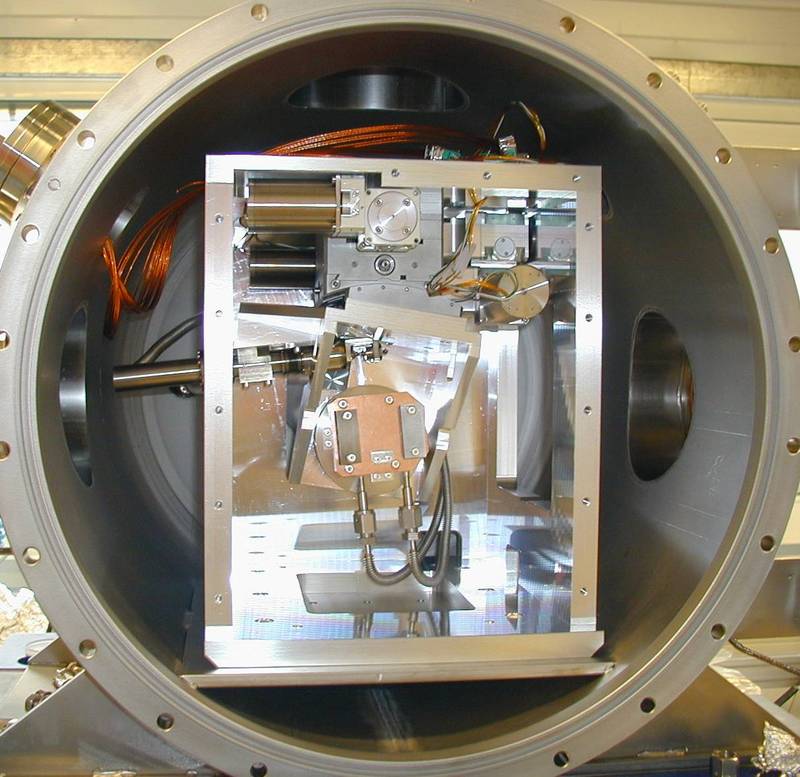Post-monochromator
The post-monochromator is installed in OH2 at 55 m from the source point. His role is to further reduce the heat load so that there is no “ thermal” broadening of the energy resolution function. His operation is optional, and necessitates the use of the collimating CRL in order to provide the highest possible throughput: due to the higher reflection order, the spectral angular acceptance, the Darwin width wD, is significantly smaller than the natural vertical divergence of the x-ray beam. At present a silicon (3 3 1) symmetric channel-cut is installed, providing an intrinsic energy resolution of (DE/E)int = 1.44x10-5. The Table below summarises its main characteristics.
| Si (n n n) |  B[deg] B[deg] |
 D [mrad] D [mrad] |
 h h |
|---|---|---|---|
| 8 | 18.336 | 4.77 | 5.7 |
| 9 | 16.237 | 4.19 | 5.76 |
| 11 | 13.226 | 3.38 | 5.84 |
| 13 | 11.161 | 2.84 | 5.89 |
 B denotes the Bragg angle and Dh is the beam offset induced by the post-monochromator.
B denotes the Bragg angle and Dh is the beam offset induced by the post-monochromator.
 Picture 1 : View of the Post-monochromator vacuum chamber. |
|
|
|





